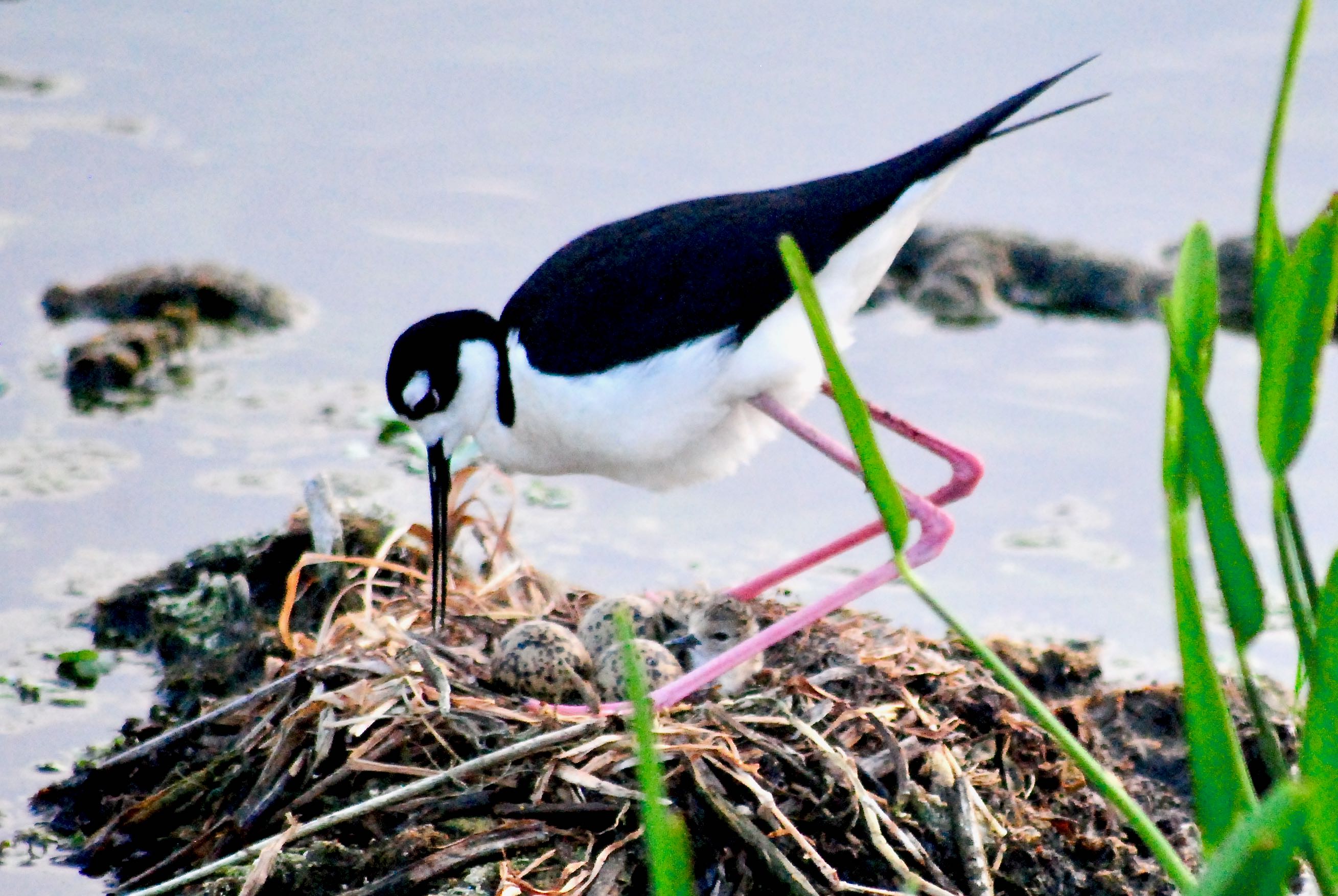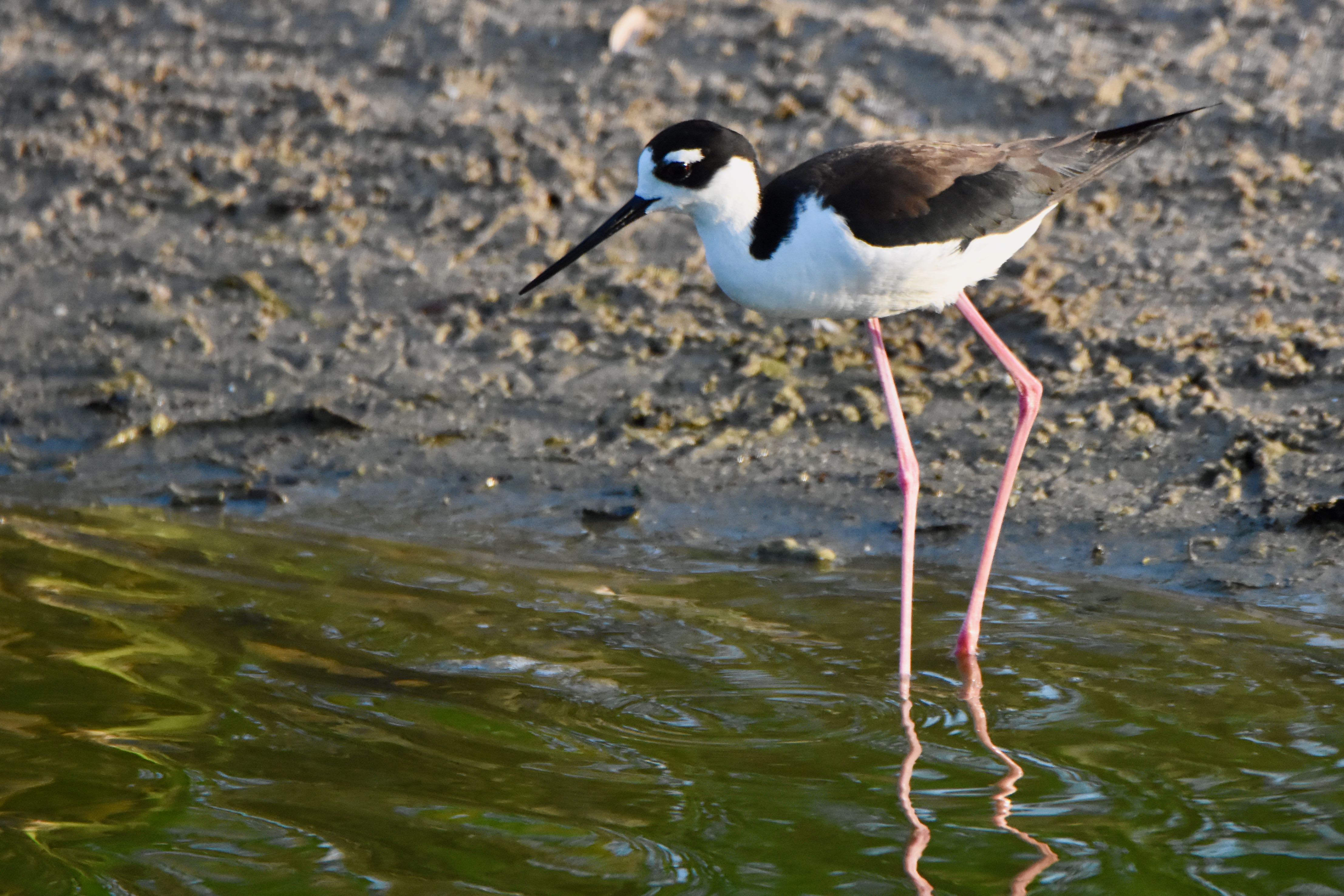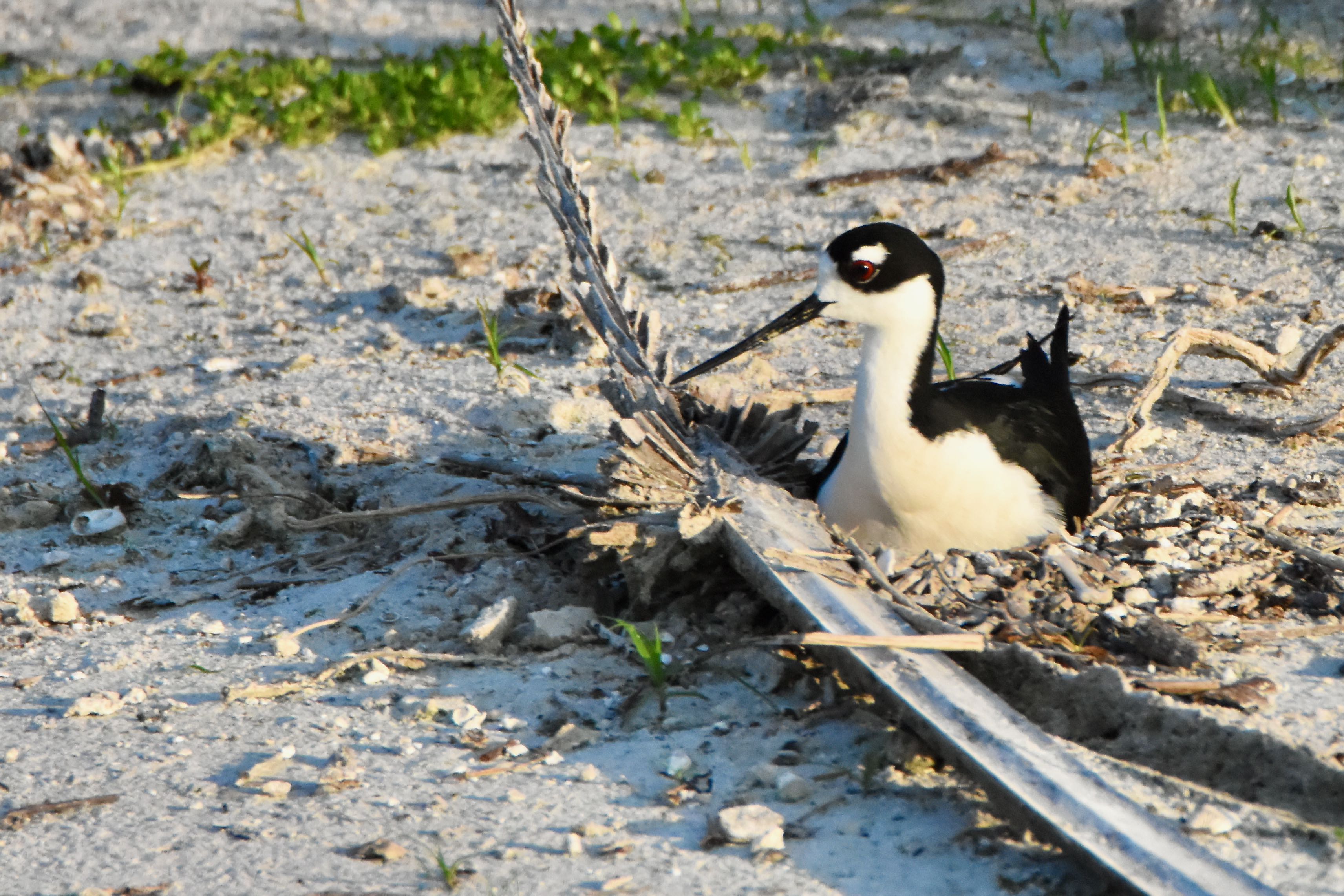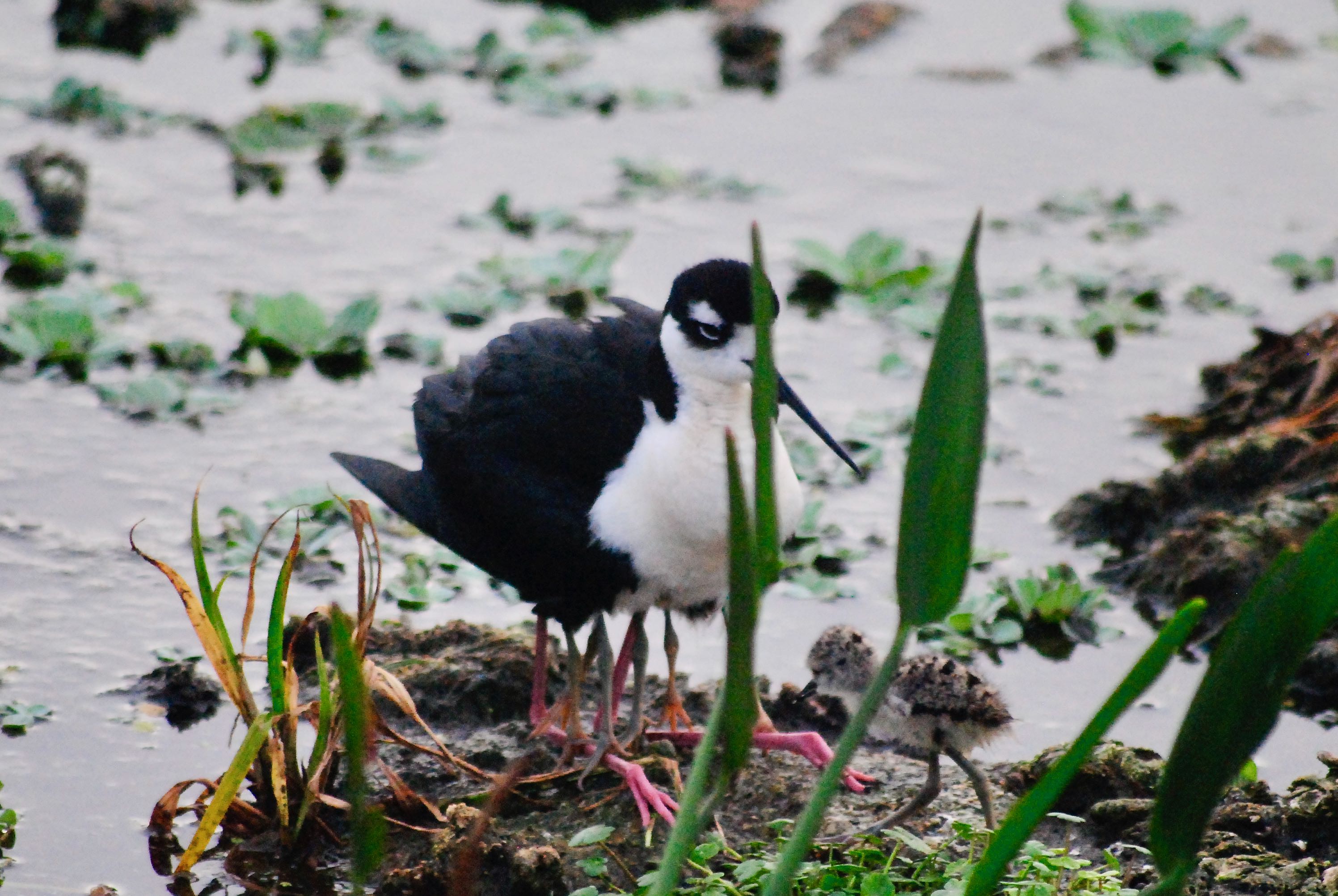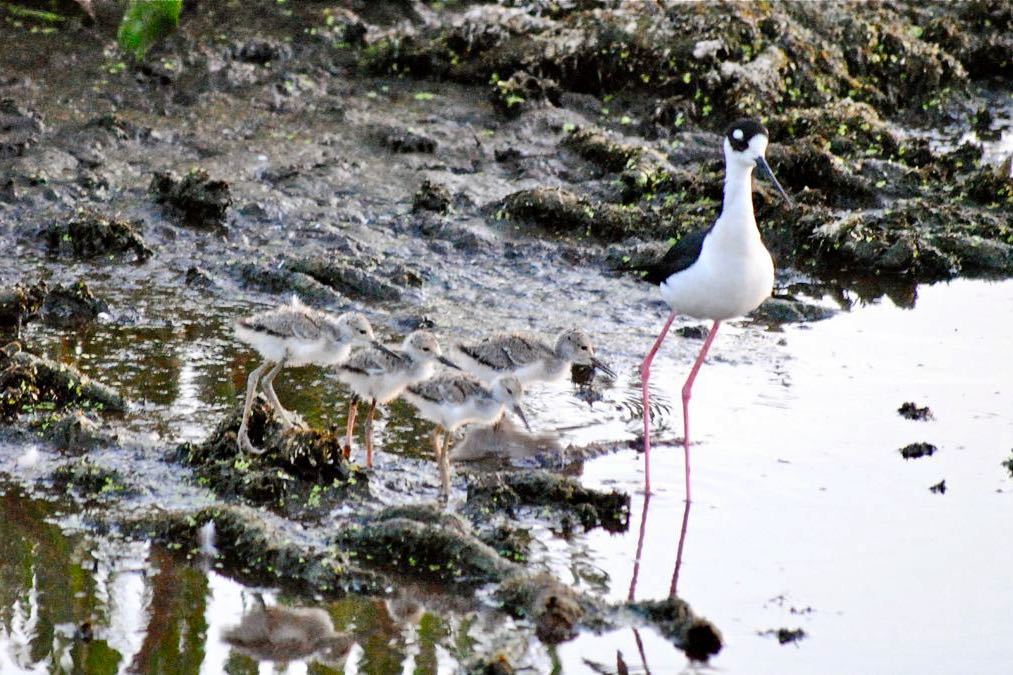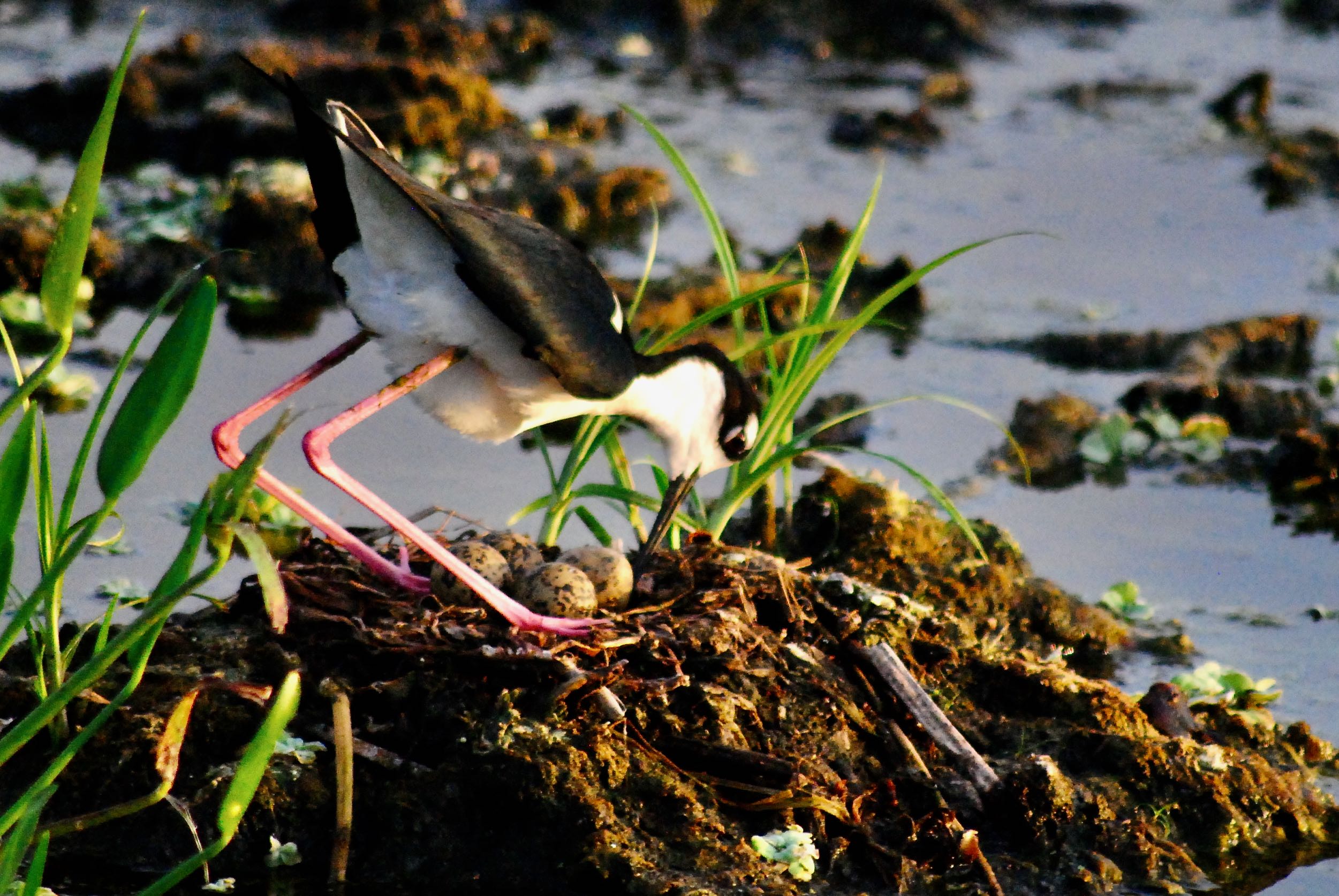
Black-necked stilt photographed at Green Cay Nature Center, Boynton Beach, Palm Beach County, in May 2013.
Black-necked stilt, Himontopus mexicanus, describes this bird perfectly. Black and white, with pink legs that are the longest in proportion to body size of any bird except the flamingo, the black-necked stilt is hard to miss and even harder to misidentify.
They are migratory birds who come to South Florida to breed, building nests on mud flats and wetlands. Green Cay and Wakodahatchee are two of the better places to spot them beginning in late March or early April. Breeding pairs will stay into July, when their offspring are ready to migrate. Rarely, we've seen stilts in the fall as they make a migratory pit stop.
Stilt males and females might appear alike until they're seen side by side, as in the photo below. Males are more of a deeper black, while females are more of a dull brown.
Their habitats are wetlands and mudflats, where they nest on small mounds, often just barely above the water. Both parents take part in building the nest, itself just a scrape in the ground, sometimes lined with pebbles, shells and other bits and pieces. Females will lay a clutch of four eggs, sometimes three, sometimes five, which will take nearly four weeks to incubate. Both parents take turns sitting on the nest. Once hatched, the young soon are ready to clamber out of the nest and explore their new world. They're also capable of feeding themselves.
Stilts are extremely protective parents, harassing anything they perceive as a threat. We’ve seen them react in unison to an encroaching alligator, flying at their target and generally making as a big a ruckus as they possibly can. The odd thing is that they are extremely territorial yet still react as a group.
Stilts tend to hang in the shallows and mud flats, where they probe for food using their lengthy needle-like bills. You might hear stilts, with their what-what cry, before you see them. Food includes flies, beetles, shrimp, snails and seeds. They'll herd small fish into small pools for easy pickings.
These birds can survive in a wide range of climates. They're year-round residents of the Caribbean, Mexico and Central America. They're also found as far south as Brazil. In the United States, they're summer visitors to parts of the southeastern coast.
But they're also at home year-round in parts of the Sonora Desert of Arizona, while others spend their summers in portions of the northern Rockies.
There is a subspecies in Hawaii called the ae'o, which is federally listed as endangered. The major threat to this stilt is loss of habitat, in part because of invasive plants clogging up normally open waters. Generally speaking, though, the stilt population is in pretty good shape.
Black-necked stilts are members of Recurvirostridae, which includes avocets as well as stilts.
Green Cay Nature Center
They are migratory birds who come to South Florida to breed, building nests on mud flats and wetlands. Green Cay and Wakodahatchee are two of the better places to spot them beginning in late March or early April. Breeding pairs will stay into July, when their offspring are ready to migrate. Rarely, we've seen stilts in the fall as they make a migratory pit stop.
Stilt males and females might appear alike until they're seen side by side, as in the photo below. Males are more of a deeper black, while females are more of a dull brown.
Their habitats are wetlands and mudflats, where they nest on small mounds, often just barely above the water. Both parents take part in building the nest, itself just a scrape in the ground, sometimes lined with pebbles, shells and other bits and pieces. Females will lay a clutch of four eggs, sometimes three, sometimes five, which will take nearly four weeks to incubate. Both parents take turns sitting on the nest. Once hatched, the young soon are ready to clamber out of the nest and explore their new world. They're also capable of feeding themselves.
Stilts are extremely protective parents, harassing anything they perceive as a threat. We’ve seen them react in unison to an encroaching alligator, flying at their target and generally making as a big a ruckus as they possibly can. The odd thing is that they are extremely territorial yet still react as a group.
Stilts tend to hang in the shallows and mud flats, where they probe for food using their lengthy needle-like bills. You might hear stilts, with their what-what cry, before you see them. Food includes flies, beetles, shrimp, snails and seeds. They'll herd small fish into small pools for easy pickings.
These birds can survive in a wide range of climates. They're year-round residents of the Caribbean, Mexico and Central America. They're also found as far south as Brazil. In the United States, they're summer visitors to parts of the southeastern coast.
But they're also at home year-round in parts of the Sonora Desert of Arizona, while others spend their summers in portions of the northern Rockies.
There is a subspecies in Hawaii called the ae'o, which is federally listed as endangered. The major threat to this stilt is loss of habitat, in part because of invasive plants clogging up normally open waters. Generally speaking, though, the stilt population is in pretty good shape.
Black-necked stilts are members of Recurvirostridae, which includes avocets as well as stilts.
Green Cay Nature Center

